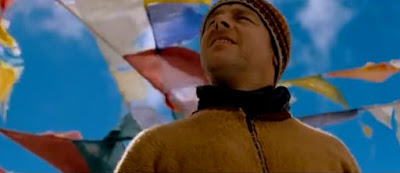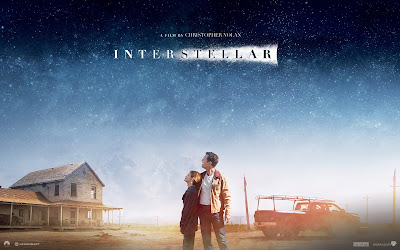 |
| Actor/Producer Anna Yosin |
 |
| Victoria Woodhull |
When we think of story, we think of entertainment. We think of stories that move us emotionally. We laugh, we cry, we get angry or inspired. But stories also teach and inform us in many ways. We can learn about the past or different cultures through the exposure to stories - whether it be live theater, film, TV, new media or the good ol' book. Often we get history lessons from storytelling and that tradition goes back to before literature existed. But what happens when those stories are skewed by what is left out? We miss out on learning about some of the most inspiring people in history, especially if we depend only on the knowledge we learn in our classrooms. Unfortunately, our history books leave out so much and the content is often politically skewed.
This really hit me about a year ago. I stopped at a truck stop on my way back to LA from Tucson and picked up a few interesting books about women in the West. I found one particularly interesting - “The Bad Girls of the Wild West.” Although the book only touches upon women of notoriety in the days of the Wild West, it was enough to spark my interest. I found myself wondering why, out of all the Western movies and TV shows, these women's stories weren't told in more detail. Some may have appeared in supporting roles, but none of the movies (at least that I am aware of) featured them as the main character. So I started to dig deeper and I found some rare historical gems!
Among the stories that everyone knows like Calamity Jane and Annie Oakley, I found many that we don't hear about. These women played important roles in the history of our country. For example: Stage Coach Mary (the first person to deliver mail for Wells Fargo on a stagecoach), Clara Barton (the founder of the American Red Cross), Elizabeth Bassett and her two daughters (who ran their own ranch, smuggled cotton from Mexico and fought against big ranching companies who were taking over all the smaller ranches… a familiar struggle even today), or how about Maria Rita Quinteros de Valdez, (another rancher who owned a massive stretch of land that is now Beverly Hills), or Toby Riddle (a Native American who stepped in and prevented some deadly battles, then traveled to the east coast educating people about Native American culture). That’s just to name a few, of MANY.
This really hit me about a year ago. I stopped at a truck stop on my way back to LA from Tucson and picked up a few interesting books about women in the West. I found one particularly interesting - “The Bad Girls of the Wild West.” Although the book only touches upon women of notoriety in the days of the Wild West, it was enough to spark my interest. I found myself wondering why, out of all the Western movies and TV shows, these women's stories weren't told in more detail. Some may have appeared in supporting roles, but none of the movies (at least that I am aware of) featured them as the main character. So I started to dig deeper and I found some rare historical gems!
Among the stories that everyone knows like Calamity Jane and Annie Oakley, I found many that we don't hear about. These women played important roles in the history of our country. For example: Stage Coach Mary (the first person to deliver mail for Wells Fargo on a stagecoach), Clara Barton (the founder of the American Red Cross), Elizabeth Bassett and her two daughters (who ran their own ranch, smuggled cotton from Mexico and fought against big ranching companies who were taking over all the smaller ranches… a familiar struggle even today), or how about Maria Rita Quinteros de Valdez, (another rancher who owned a massive stretch of land that is now Beverly Hills), or Toby Riddle (a Native American who stepped in and prevented some deadly battles, then traveled to the east coast educating people about Native American culture). That’s just to name a few, of MANY.
Two of these women really stood out for me and I am currently creating projects based on their stories. Biddy Mason, who was a slave for the first 40 years of her life, sued her owner and won her freedom in Southern California in 1856 (a year before the Dread Scott case propelled the country into civil war.) She went on to become one of the wealthiest property owners in Los Angeles, started the first black school and church, donated money to the poor and visited prisoners to bring a little light into their lives. Talk about a philanthropist! My other heroine, Victoria Woodhull, was the first woman on Wall Street to own a stock brokerage company. She started a revolutionary periodical and wrote articles about the most leading edge controversial issues. She actually ran for President of the United States of America in 1871 - almost 50 years before women were legally allowed to vote!
What? Is this for real? Yes! It's huge! Why isn’t it in our history books? These stories are impressive even by today's standards and are nothing less than inspiring. They are too powerful not to be told. I believe that if more people knew about their challenges and accomplishments, they would be inspired to do more in our modern society. That is why I am so motivated to get these stories out. There are parts of the world where women are not allowed to be educated or even go outside of their homes without their husbands - let alone create their own successful business or run for president. It is my hope that when people hear about the brave women of our past, it will inspire them to research more, uncover more and give them courage to take a stand. When we hear stories of great accomplishments or of crossing new boundaries, it encourages us to believe in ourselves. We are more than capable of accomplishing what may be deemed impossible by society’s standards. The stories of these incredible women give us the courage to leap higher, stretch farther and have trust in humanity.
Guest blogger, Anna Yosin














